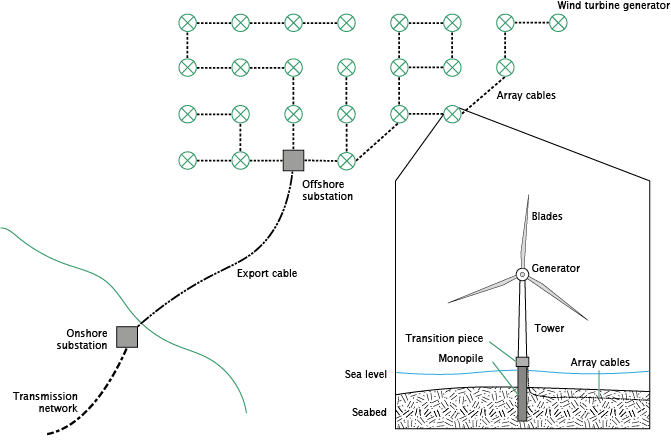Wind is created from a differential in air pressure between two locations, causing air to flow from areas of high pressure to regions of low pressure. This kinetic energy can be harnessed through wind turbines in order to generate electrical energy. Wind energy has been one of the fastest growing sources of renewable energy. In the UK alone, there are c. 1000 wind projects representing an installed capacity of c. 13.5 TW, generating in excess of 30 kTWh per annum. Broadly, projects are divided into onshore and offshore wind farms. Onshore turbines connect into the existing distribution network and can range upwards from a single turbine to large farms. Offshore projects are more complex, requiring more advanced engineering techniques to install turbines on the sea bed, as well as the installation of see floor cables to connect the offshore farm to the land. As a result, offshore projects tend to be more capital intensive and larger than their onshore counterparts. An example of an offshore wind project layout is shown below.

Wind is an intermittent source of electricity, only generating when there is sufficient wind resource, within the range of the turbine. As electricity is produced, transmitted and consumed at a particular frequency, wind turbines need to operate at particular speeds to match the frequency of their export with the wider grid. Gears and braking systems within the turbine allow this. Typically wind turbines will operate for between 25-30% of the available hours in any year.
Case studies provide real life examples relating to a subject. Click on a link below to explore more